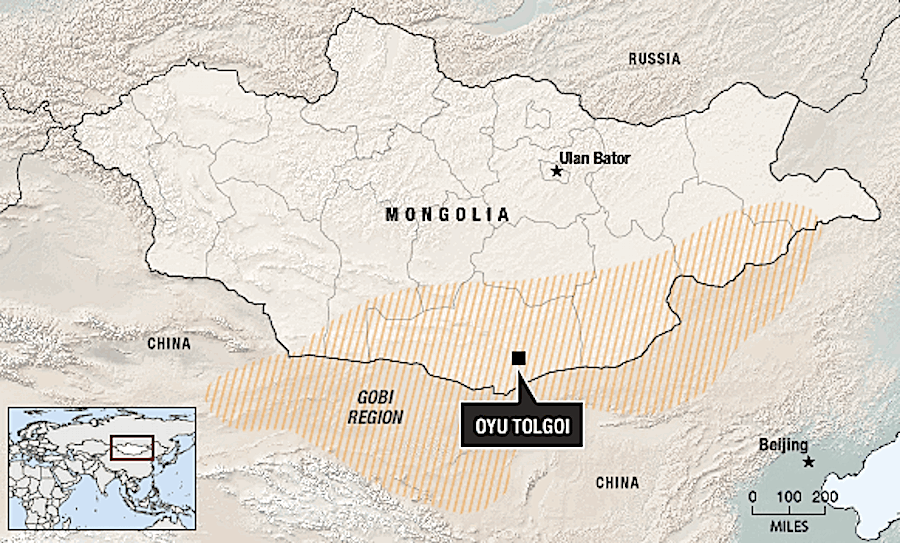Ulaanbaatar threatened in early January to halt construction at the mine, arguing that delays and higher-than-expected costs had eroded the economic benefits the country had hoped for.
Rio had in 2019 flagged stability risks associated with the original project design, which translated into as much as an additional $1.9 billion cost and a 30-month delay.
Mongolia threatened in January to halt construction at the mine expansion, arguing that delays and costs had eroded the economic benefits the country had hoped for.
The miner confirmed in December the new estimate for the long-awaited underground expansion, adding that production would begin in October 2022.
Erdenes Oyu Tolgoi LLC, the Mongolian state-owned company that owns a third of the mine, reacted to the new timeline and budget by saying that Rio had not delivered on its 2015 promises.
Erdenes’ interest in Oyu Tolgoi is technically held through a 34% in a Mongolian company called Oyu Tolgoi LLC. The remaining stake belongs to Canada’s Turquoise Hill Resources (TSX, NYSE: TRQ), which is 50.79% owned by Rio Tinto.
The best scenario for everyone involved in the mine development, which will make Oyu Tolgoi the world’s fourth-largest copper operation once completed, is uncertain.
The Mongolian Parliamentary Working Group, formed in 2019, recommended exploring possibilities for a production sharing agreement and/or replacement of the equity interest with a special royalty.
Multiple issues
Rio and Turquoise Hill are focused on bringing the underground expansion into production. But they have locked horns on the financing aspects of it. The Canadian miner scored a temporary, but key victory last week, after an arbitration tribunal handling the spat granted the Canadian miner interim relief.
The ruling prevents the mining giant from restricting Turquoise Hill’s talks on funding and other matters with its fellow stakeholders in Oyu Tolgoi.
The miners also have other issues to resolve, including extending an existing power agreement beyond March. The operation is powered by coal-fired electricity imported from neighbouring China via overhead cables.
NOW READ: Stakes high for Rio Tinto, Mongolia as Oyu Tolgoi talks loom
Then there is a potential restructuring of Oyu Tolgoi’s management team, as well as the need to ratify a 2019 statement of resources and reserves and a feasibility study prepared in 2020.
All these topics need to be addressed before Rio Tinto makes a major mining decision — an undercut — in May.
The technique is part of an extraction method known as block caving. It involves creating an artificial cavern below the ore body, allowing it to progressively collapse under its own weight.

Rio Tinto’s decision will also be affected by the view of its brand-new boss, Jakob Stausholm, who only two weeks ago overhauled the senior leadership team and created two new roles.
The mining giant has repeatedly said the underground expansion is its most important growth project. Once completed, Oyu Tolgoi will churn out 480,000 tonnes of copper a year from 2028 to 2036.




